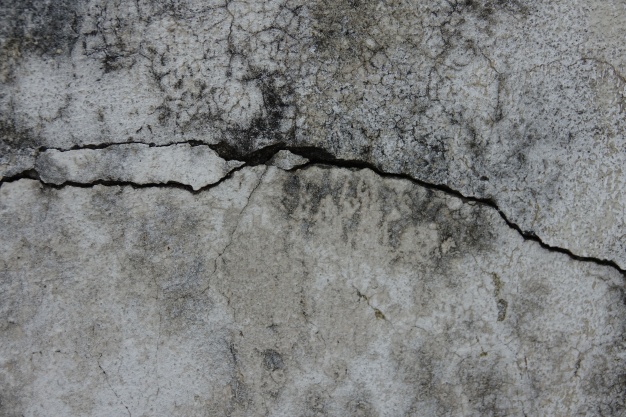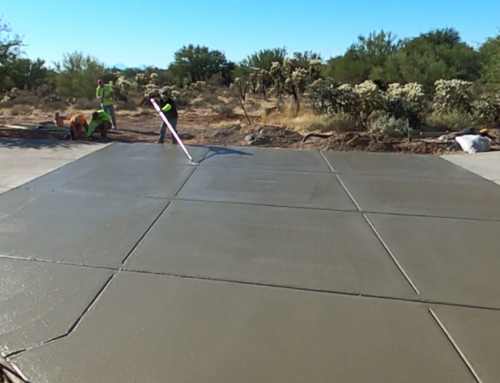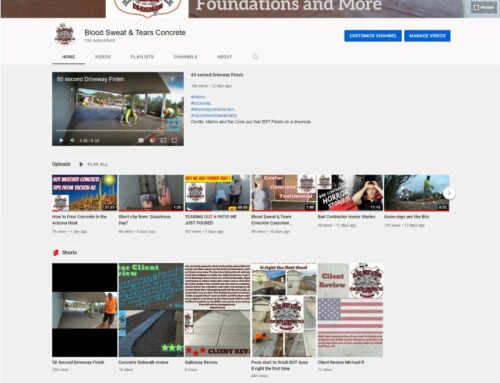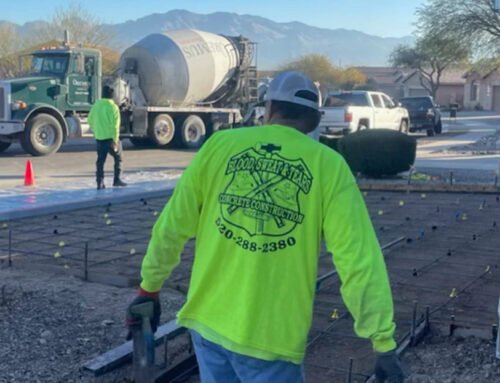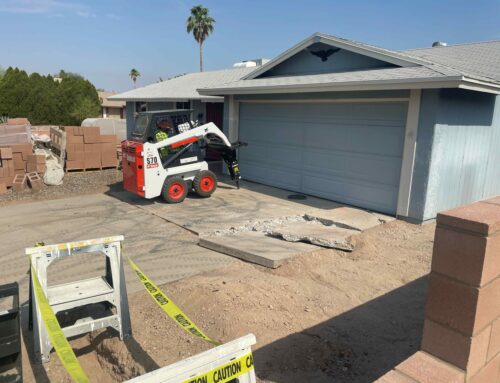You recently had some concrete work done on your Tucson home and you noticed some cracking a day or 2 later. You are probably thinking your contractor screwed up and the project you just spent so much money on will quickly deteriorate. You might be right but it most likely isn’t anything to lose sleep over.
Let’s take a look at the main culprits in the world of concrete cracking and see if we can put your mind at ease. In this article we will cover 6 types of concrete cracking:
- Plastic shrinkage cracks
- Expansion concrete cracks
- Overloading cracks
- Settling cracks
- Crazing cracks
- Crusting cracks
1. PLASTIC SHRINKAGE CRACKS:
When your concrete is first poured it has water in it to make it workable. As the water escapes, the curing concrete, there is a certain amount of shrinkage that occurs. Your contractor should use control joints at certain intervals to give the concrete a place to crack and avoid as much random cracking as possible. Unfortunately even when all guidelines are followed cracking outside of the control joints can still occur.
Shrinkage cracks are normally very narrow. They are however through the entire depth of the slab. This is why reinforcing is a good thing. As the concrete expands and contracts the cracks will open much more quickly if rebar or mesh wasn’t used.
As long as your Contractor followed the basic rules of concrete you will have to live with the cracks in most cases. There are however circumstances where your contractor may be responsible.
The concrete should be poured at a proper consistency (slump). If the concrete is too loose it is easier to work with but loses much of its strength. Did the concrete look like soup or was it a bit clumpy when placed? Polyethylene or fiber expansion joint should be used along climate controlled foundations, poles, electrical conduit, plumbing or any other irregular surfaces that can send a crack across your slab.
Hot weather and wind can cause shrinkage cracks as well. Starting early in the morning is really a necessity when hot weather is in the forecast. If it’s too windy finishing aids can be used to save the day but if your contractor isn’t willing to spend the money on them the pour should be postponed.
2. EXPANSION CONCRETE CRACKS:
This type of crack may not surface until weeks or months after the pour. If your concrete is poured up against hard surfaces on either side it needs a place to grow. In the heat concrete expands like most everything else. If your contactor didn’t provide a cushion, with polyethylene, asphalt or fiber expansion, the pressure will result in a crack.
3. OVERLOADING CRACKS:
Concrete can be ordered in various psi. Here in Tucson AZ the majority of contractors are using a 2500 or 3000 psi mix. 4000 psi is a minimum in parts of the country with a frost line. Reinforcing of the slab can also help. Whether your Contractor uses fiber, rebar or mesh big benefits come with the extra cost. Have a discussion about what your slab will be used for ahead of time. If there is any doubt go heavy. You normally only pour a driveway, patio or foundation once in the life of your home. This is not a time to take the cheap route.
4. SETTLING CRACKS:
If a large tree was recently removed or a utility trench was filled without compacting it is important that your Contractor knows. Your slab is only as good as the ground below it. Other scenarios to watch out for: Water line break or rain washing fill out from under slab, rodents burrowing below slab, excess fill being brought in without proper lift compaction techniques. Compacting equipment should be used to prep slab no matter what.
5. CRAZING CRACKS:
This is a very common occurrence in Tucson. If you live in the south you have most likely noticed concrete that looked like a spider web. It becomes most noticeable when it starts to rain. The cause of crazing is the surface of the slab drying out before the bottom. If the slab is sealed up too early the hydraulic pressure below creates the effect. Even though this can be unsightly it is not a structural problem. Good finishing techniques will minimize this problem.
6. CRUSTING CRACKS:
Crusting cracks occur on the most aggressive areas of stamped concrete. If excessively warm or windy the surface of the concrete may become brittle before the slab is set up tight enough to take the stamp. The most drastic depth changes on the stamp will open a crack in the surface. Your finisher can hide the crack somewhat while the surface is still pliable or when applying the sealer. Like crazing this is only cosmetic and not a structural problem.
Choose an experienced team with veteran finishers, and let your contractor know all you can about what your requirements may be. Remember; Good contractors hate cracks even more than you do. Become a team and bring in the concrete supplier to have a mix designed for your needs.

